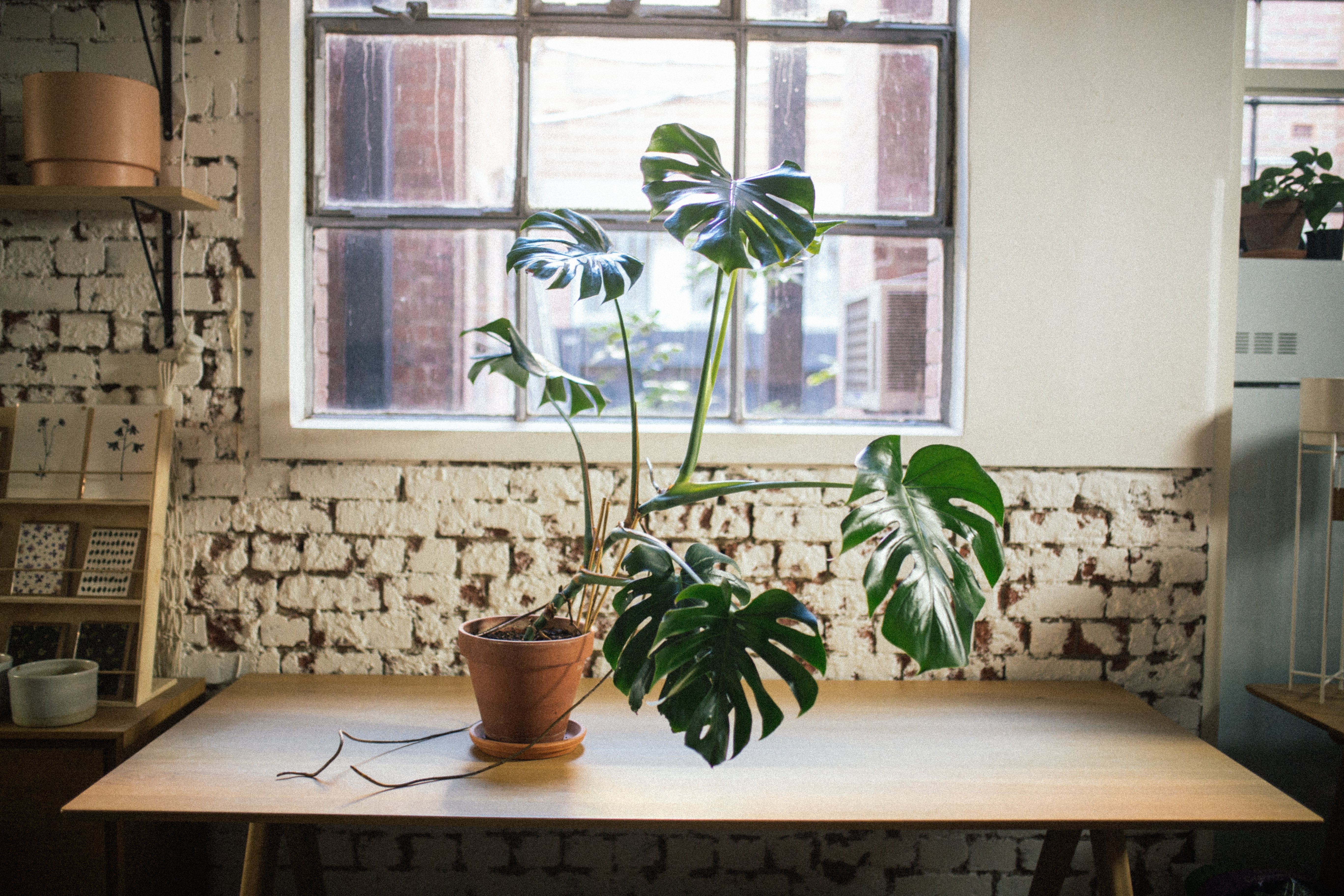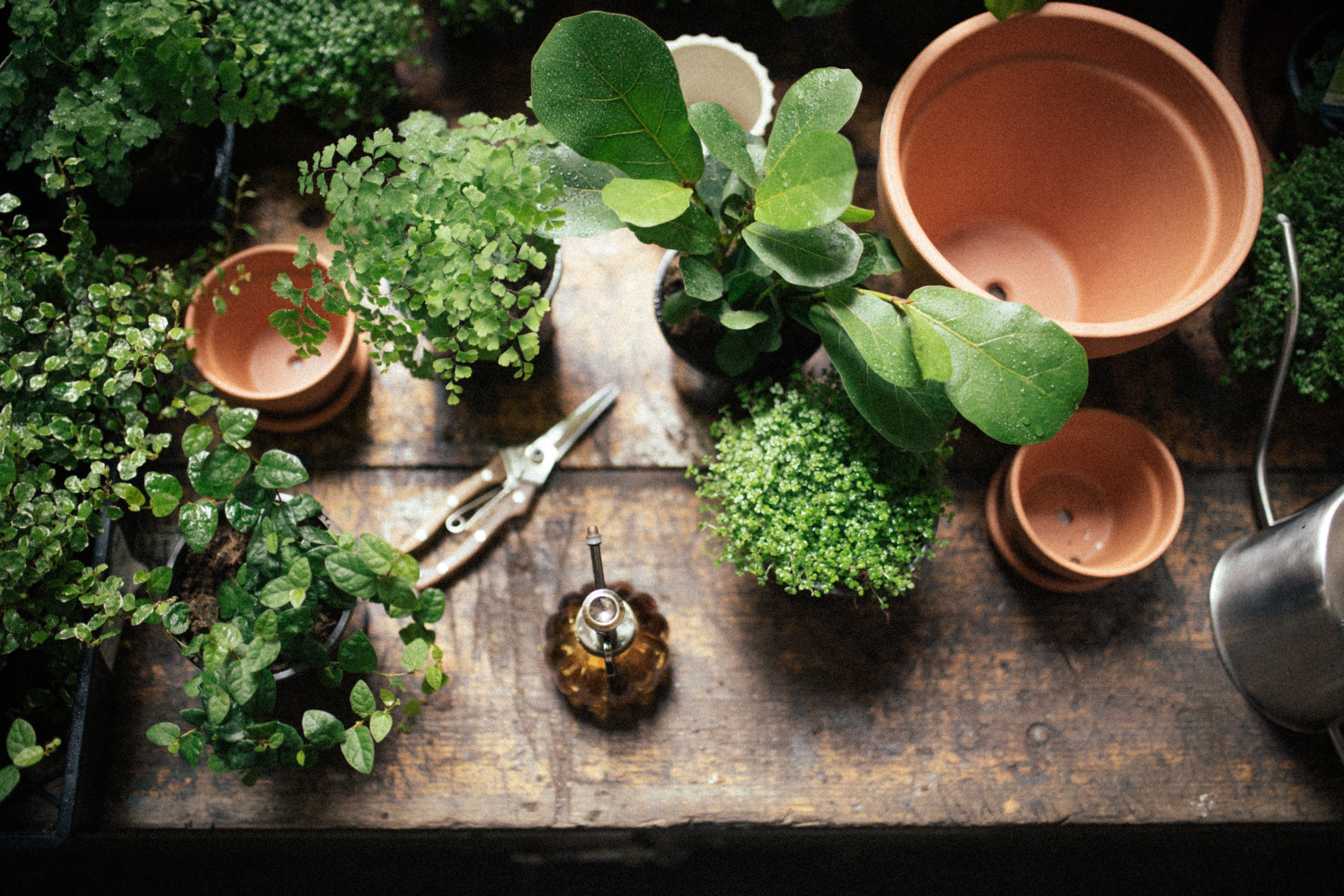If you're just starting out with indoor plants there are probably a lot of questions you might have. It may seem a little daunting at first but being an indoor gardener is actually not all that hard. After years of teaching people how to care for plants, I have come up with these ten tips to turn you into an instant green thumb! If you are just getting into indoor plants and you don’t know what it takes, then this is the article for you.
1. Most common indoor plants need minimal water
Most plants do not need to be watered until their soil is at least half dried out. This means you may only need to water once every 2-4 weeks depending on the weather. The thirstiest plants may need water once a week but that is still pretty rare. Keeping your plants too wet will very quickly cause damage, while allowing them to become dry gives you a lot of leeway and time to make corrections. Check out our full watering guide here!
2. Small pots to get big plants
Indoor plants are quite happy to be cramped, so there is no rush to re-pot! In fact, many plants will start to grow faster once their roots are a little bit pot-bound. Many plants naturally grow in very tight conditions and will still get huge no matter what. The nursery pot your plant comes in allows for great drainage and air flow, so if possible you can just hide it inside a ceramic pot to achieve your desired aesthetics.

3. Indoor plants need light, but how much?
Your indoor plants do not need direct sun. Indirect light is enough. Many indoor plants are naturally found growing beneath and on the side of large trees, which provide them with shade. A little direct sun can be a great boost, though just be careful of afternoon sun during very hot weather.
A few good ways to gauge if you have a bright space is if there is enough light to read a book, using only the natural light, or, if you can walk into the space and not turn on the electric lighting. If you think your space is a bit too dark then it may be best to play it safe and check out our range of low light tolerant plants here.
4. Hot or cold?
For the most part, the temperature of your house is fine for indoor plants! As long as your house does not get above 50C, the plants will actually enjoy warmth and grow faster. In Winter most indoor plants are fine as long as they stay inside with you! Some have great cold tolerance, though, so if you have some of these hardier varieties outdoors, just keep them protected from any frost.
5. Humidity
As you’re just starting out, don't worry about humidity for now. Only a handful of plants really need higher levels of humidity to survive. Make sure your plants aren't getting blasted by the air-conditioning or by a draft and then you'll be fine! Once you feel confident with your indoor plants this is definitely something you can work on, and will be crucial in expanding your plant collection into the world of more rare and exotic varieties.
6. Plant anatomy for beginners
You will read lots of articles and watch lots of videos that use these terms, so here’s a quick run-down of plant anatomy!
Nodes: Usually the area in which buds and aerial roots can be found. Can sometimes be marked with a line where the cataphyll was attached.
Bud: The point at which new growth can come from. This can include leaves or even a whole new stem. Usually just present as a small bump on the stem until activated.
Aerial roots: Roots that grow above ground and often seek out other structures to help support the plant. Often found near the node.
Internodes: This is the space between nodes! Not much happens here except for some lengthening than you may want to pay attention to. Long internodes may indicate the plant is trying to reach for more light.
Apical meristem/growing tip: This is the part of the plant where the majority of growth is going to be focused. All new leaves are being formed at this point. When removed the plant will be forced to form a new growing tip. If a plant is pruned back sometimes they will form several new growing tips and become even bushier.
Petiole: This is the part of the plant that connects the leaf to the stem.
Leaf: This is the reason we are all here. The leaf. The O.G. What more can I say! This is where the magic happens.
Cataphyll: A modified leaf which acts as a sort of cocoon for new leaves to form inside of. May dry up and be shed from the plant once the new leaf emerges.
7. Feed me, Seymour!
Liquid fertilizer are preferable for indoor plants. You can fertilise every time you water in Summer, and every second time in Spring and Autumn. You don't need to fertilise in winter as your plants will be growing far less and won't need the extra nutrients. The main components of fertilizer are nitrogen, phosphorus, and potassium. Some fertilisers will have other micro-nutrients which can make for a more well-rounded treatment. Note, seaweed extracts like Seasol are not fertilisers but are great to be used in addition to an actual fertiliser.
8. Dust ‘em off
Dust your plants off every so often. Plants are slightly electrically charged so they tend to attract dust from the air. This is great for our air quality but can eventually clog their pores and block out light. I like to wash them down in the shower while I'm watering them or for larger plants simply use a damp cloth and a spray bottle to wipe them clean.
9. Plants are a little wabi-sabi
Wabi-sabi is a philosophy of accepting the imperfection of an object and still seeing the beauty in it. With plants, sometimes leaves die, sometimes there are brown spots, and sometimes there are bugs.
Plants are living things. While we try our best to make them grow perfectly and be completely sterile, the fact is that there is a whole tiny super detailed world existing in and around our plants that is constantly affecting them. Don’t stress if your plant has a small amount of damage, it’s all part of the experience.
10. Spill the tea, honey!
The best place to learn more about how to care for your indoor plants is by heading to our website and checking out our specific care articles. If you can't find the plant you’re after you can find heaps of great videos on YouTube or check out articles written by other plant nurseries too. There is heaps of great information online but these are the most reliable sources. Keep in mind that these guides may be targeting toward caring for plants in a very different environment so may not be completely applicable to your situation.
The tags found on many plants can be vague, so be sure to ask us in-store for some great tips and advice. See you again soon!
Greener House Nursery is an Indoor Plant Nursery located at 95 Sydney Road, Brunswick, in Melbourne, Australia. We have the specialised knowledge to make sure you get the right house plants, pots, and accessories for your home. Weather you're looking for low-light, low-maintenance, pet friendly, hanging, or air purifying plants, we've got you covered.

